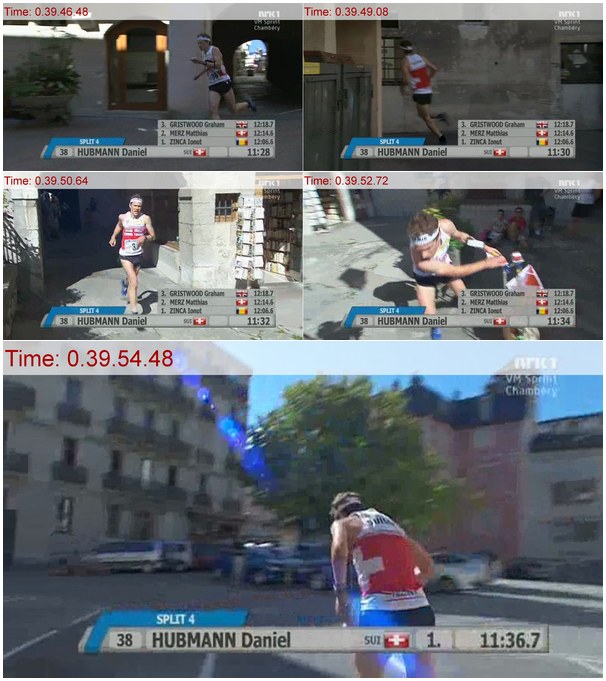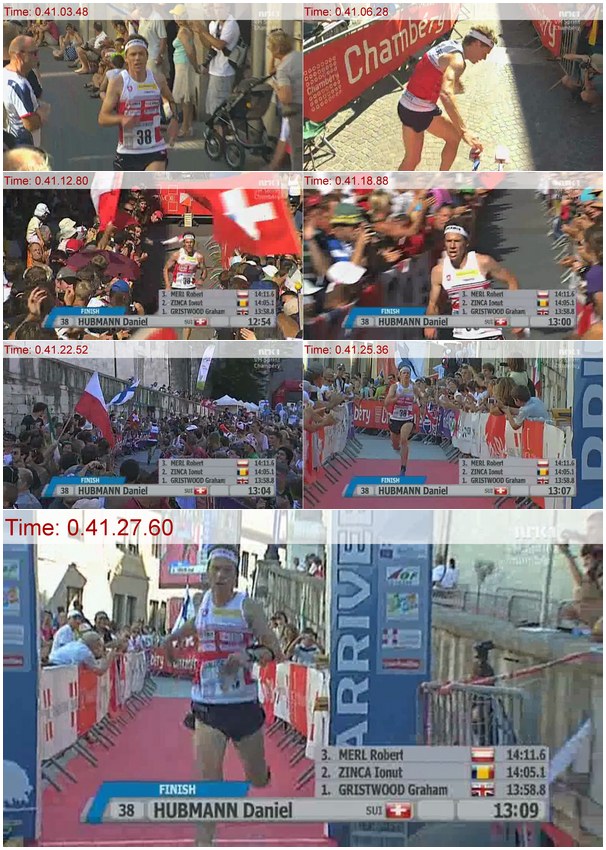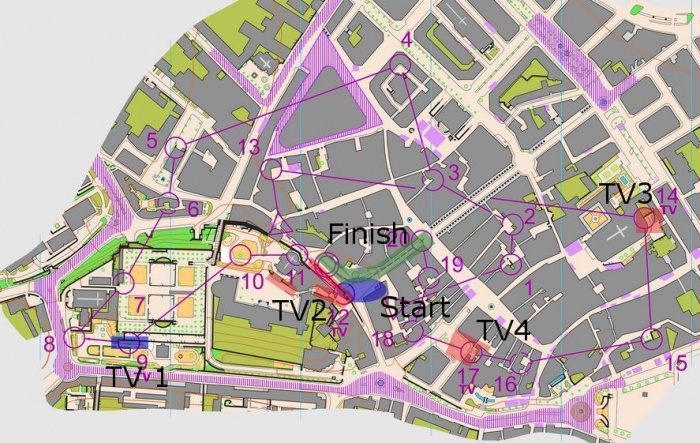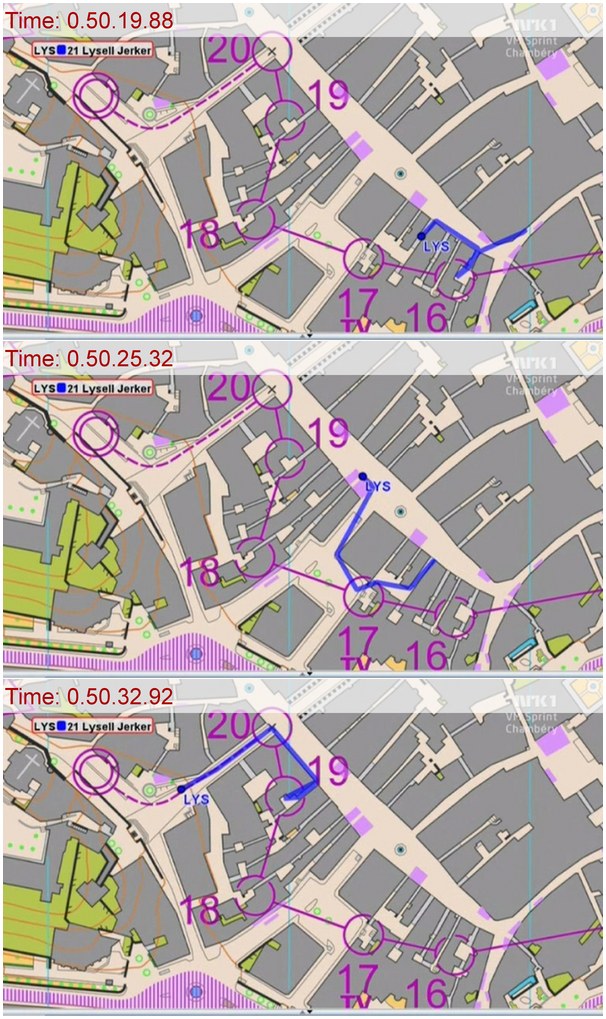From OTV
Contents |
WOC 2011 sprint - TV footage analysis
Below is provided an overview of the TV footage from WOC 2011 sprint.
Summary
The story-telling did not work too well in this broadcast due to many camera locations with short duration for each combined with seldom showing graphics (position in course / runner name / running time). Thus it was quite difficult to follow for the viewer, and the element of story-telling was mostly missing in the broadcast.
TV camera positions (Men)
Worked well
- Very good atmosphere TV-pictures of run-in due to narrow run-in corridor
Did not work well
- Often missing graphics about where in the course camera footage was shown and the name/time for runner shown. Thus difficult to make sense of more than 50% of the TV pictures for commentators /spectators
- Many very short segments without graphics/name. In many cases breaking off in the middle of a scene and jumps to another scene without playing the complete scene (and this even if the full scenes were of length 10-20 seconds)
- Did not show the good runners enough ("story-telling" element) - instead concentrated on showing all runners in the run-in
- Too many camera locations to make it possible to tell a fluent story (5 including start/finish)
- Never waits for specific runner with rolling time (important for the story-telling)
- No GPS tracking at all shown (due to bad GPS data in narrow streets according to GPS operator). Only GPS-data shown is reconstructed GPS-data of Jerker Lysell who misses a control.
Lessons to be learned
- Too many camera locations and too short duration for each location
- Show position in course with graphics each time camera footage is shown
- Always show runners name with rolling time (incl. stopping time at split)
- Play complete scene if no very special reason not to
- Wait for specific runners with rolling time in order to aid the story telling
- Use pre-warning system to aid in which runner/scene to show, and to be able to show graphics
Scene analysis - camera footage
The following scenes were used (relates to men's course - see below).
- Camera footage location 1
- 5 seconds long (+ wait for start)
- Start footage
- City scene
- Camera footage location 2 (TV1, 9th control)
- Single control footage
- Part/city scene
- 6-7 seconds long
- After 5 minutes running
- No graphics (name/running time)
- Camera footage location 3 (TV2, 12th control)
- 3 seconds + 7 seconds long, after 7 minutes running
- Spectator control footage (single control)
- City scene
- Camera footage location 4 (TV3, 14th control)
- 18-20 seconds long (but significant parts only with back of runner), after 9:30
- Single-control footage
- City scene
- Camera footage location 5 (TV4, 17th control, prewarning)
- 8-10 seconds long, after 11:30
- Single-control footage
- City scene
- Camera footage location 6 (finish)
- 20 seconds long, after 13 minutes
- Finish / run-in footage
- City scene
See screenshots of all scenes at the bottom of this page.
Scene analysis - GPS data
Very limited use of GPS-data - only reconstruction of a leg using a route redrawn by the GPS-operator. This was due to very bad GPS data in the narrow streets of the town. There was full GPS-tracking for all starters. GPS-tracking data is available here.
Scene analysis - Pre-produced material
- No route choice analysis ahead of / during the race.
- No 3D overview of course.
- No pre-produced interviews
Scenes - Camera footage
Start
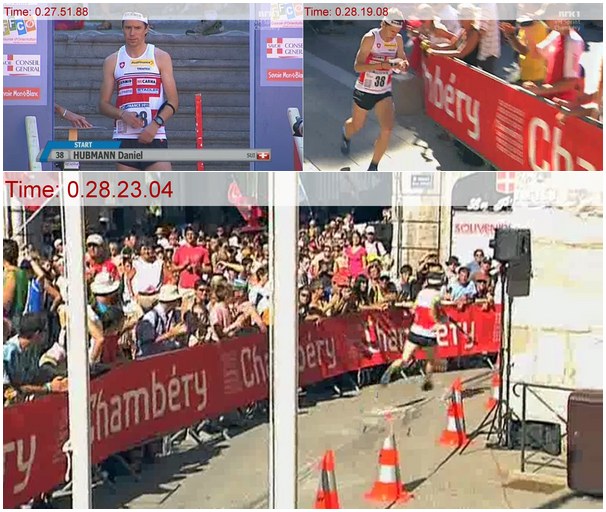
TV split 1
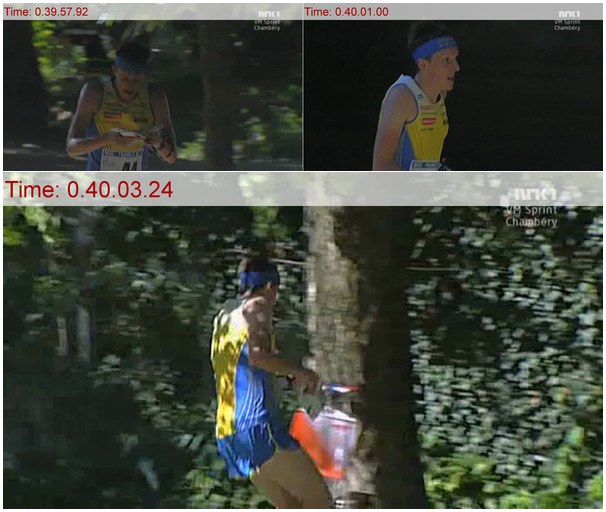
TV split 2
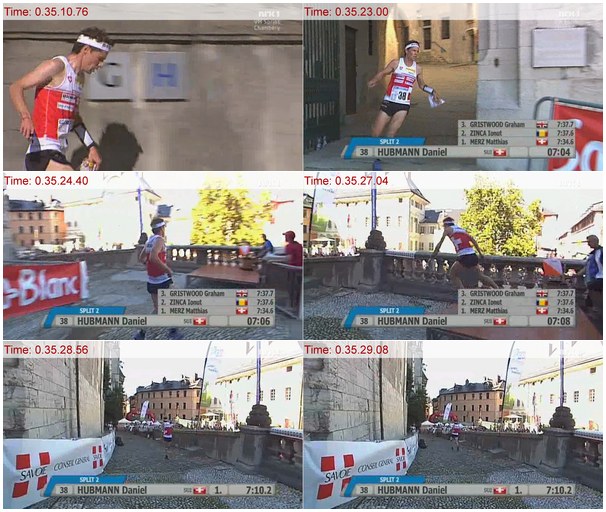
TV split 3
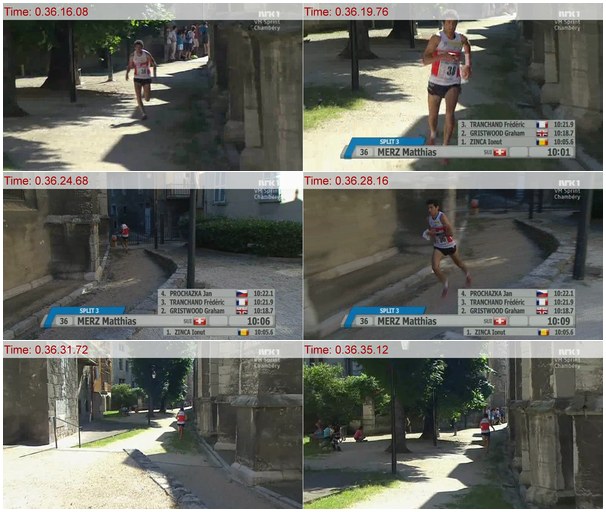
TV split 4
